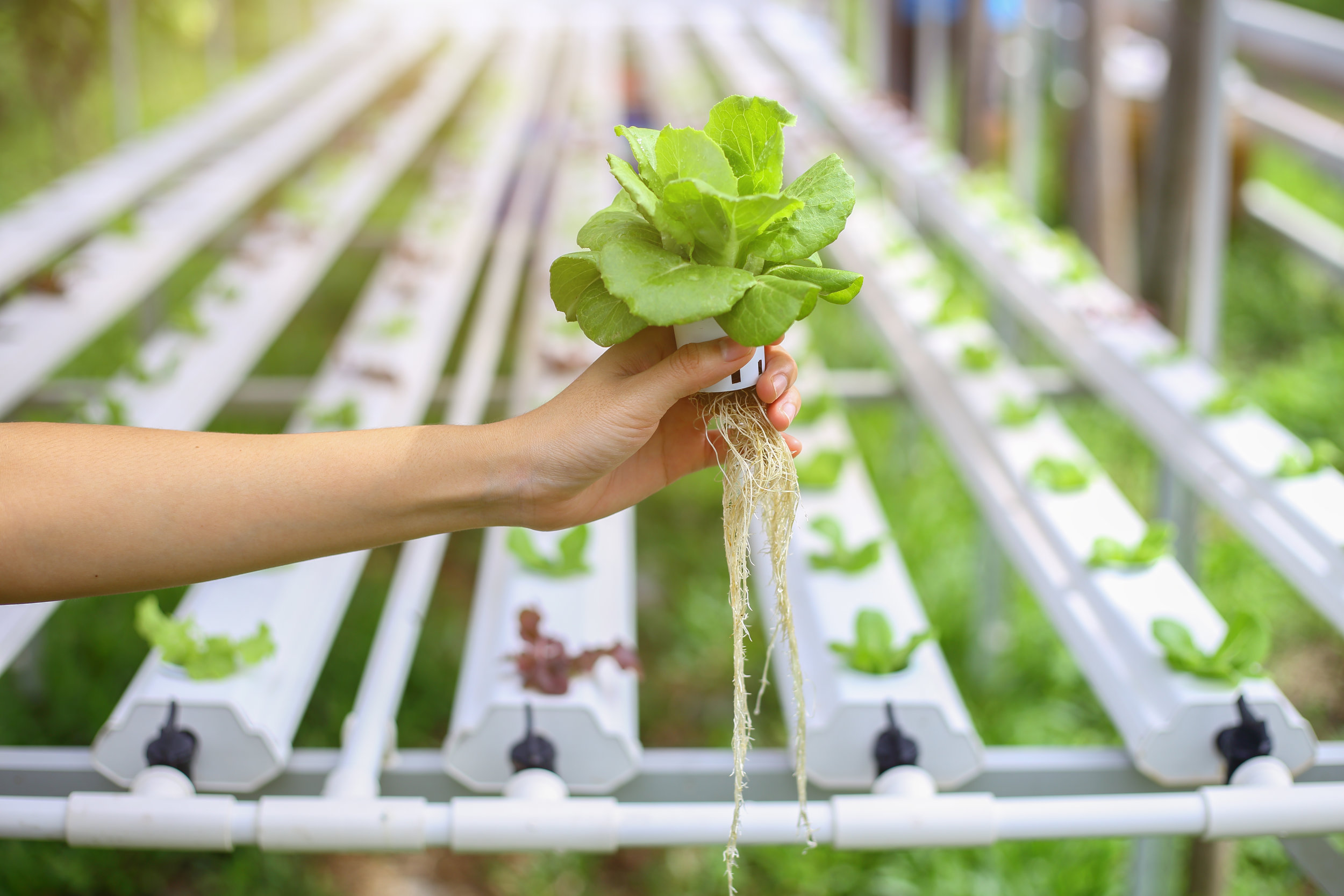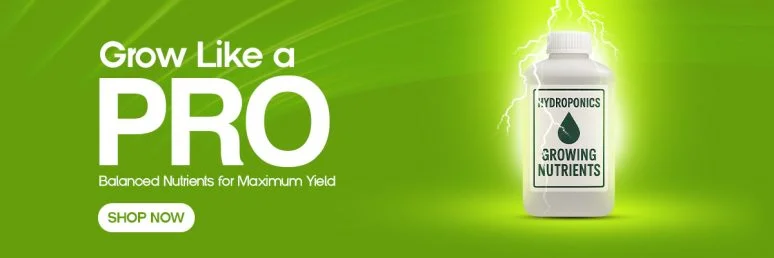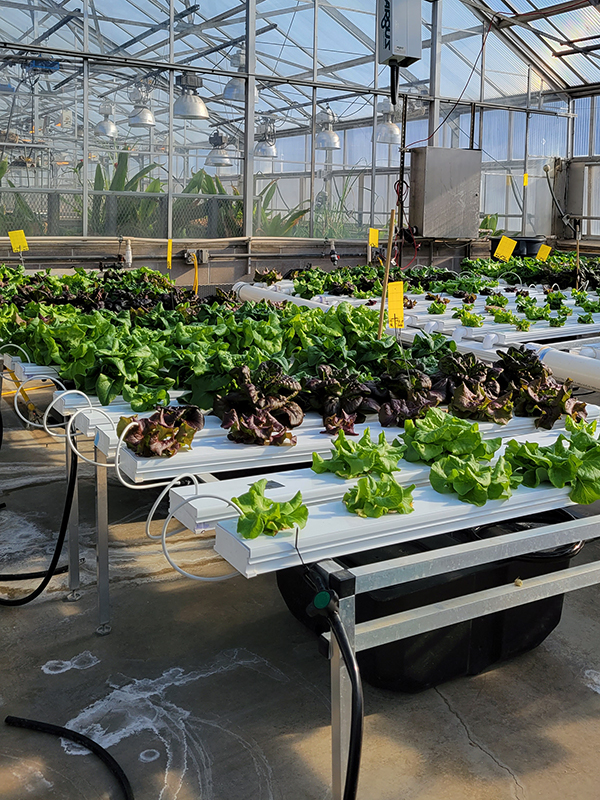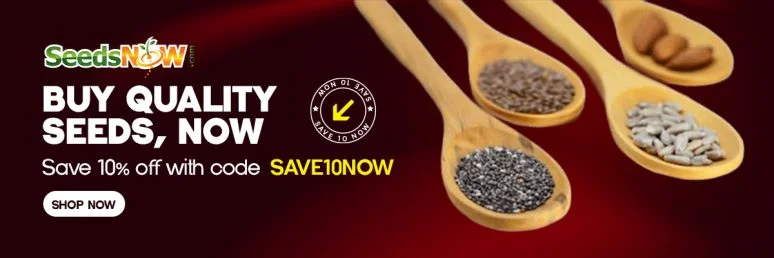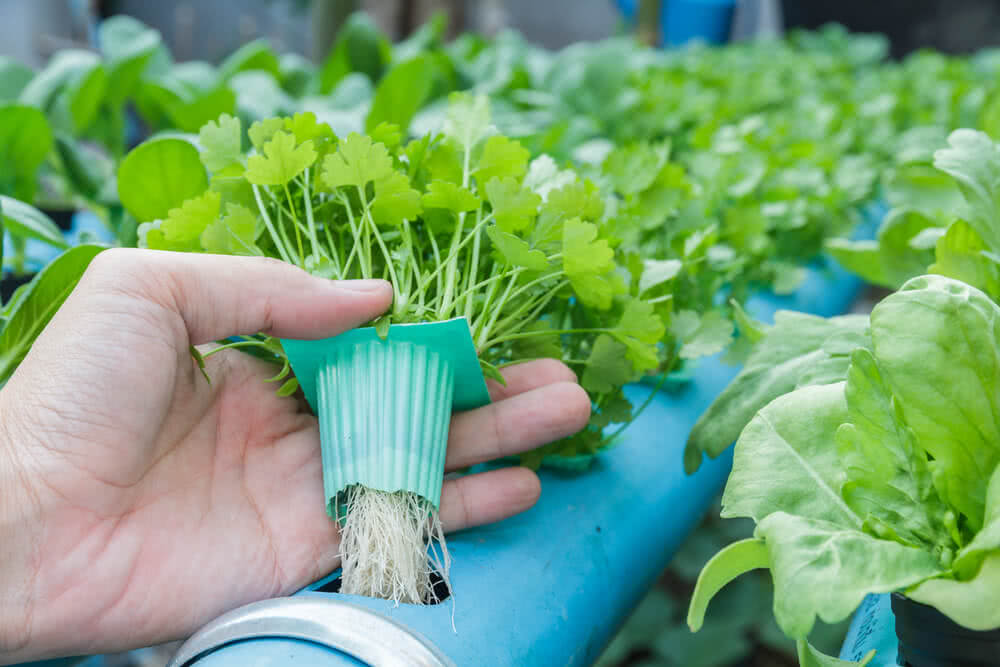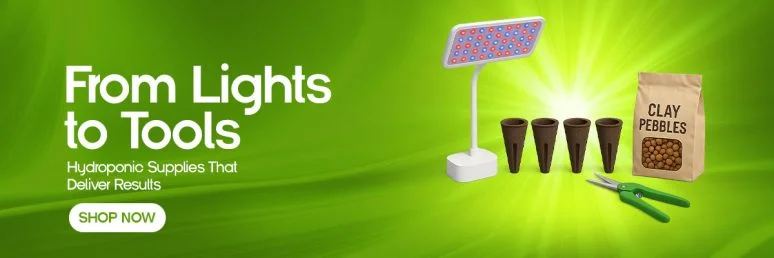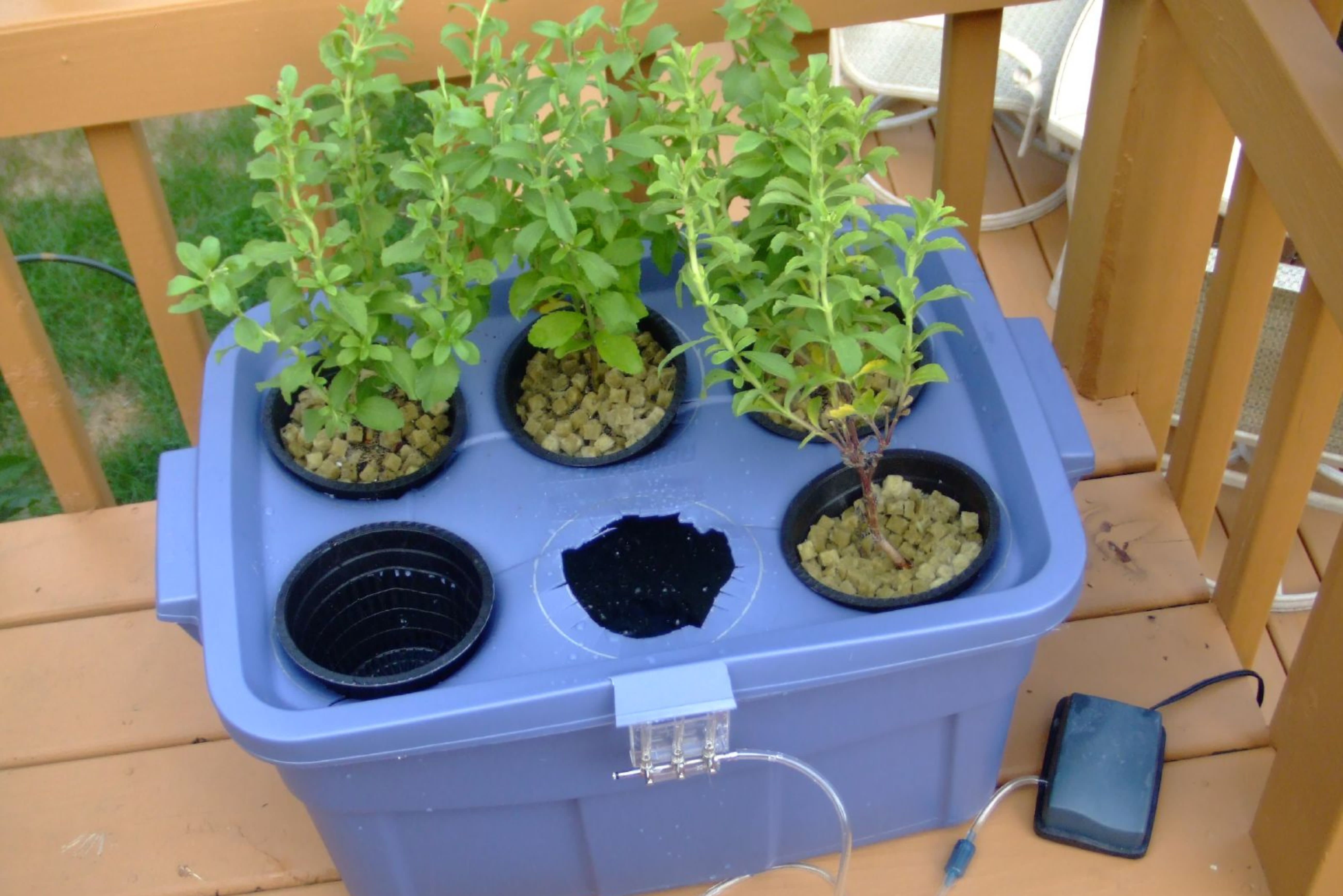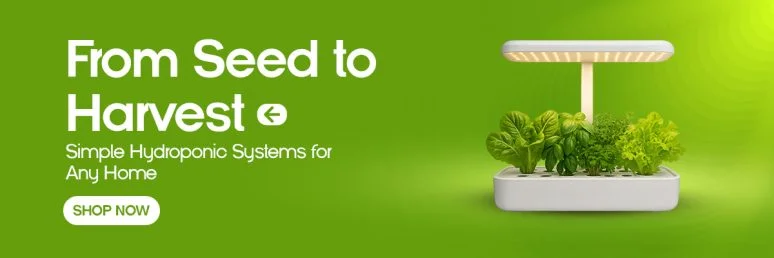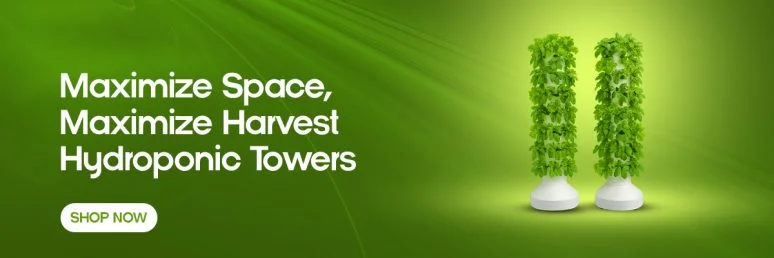What is Hydroponics And How Does It Work? Alternative Growing
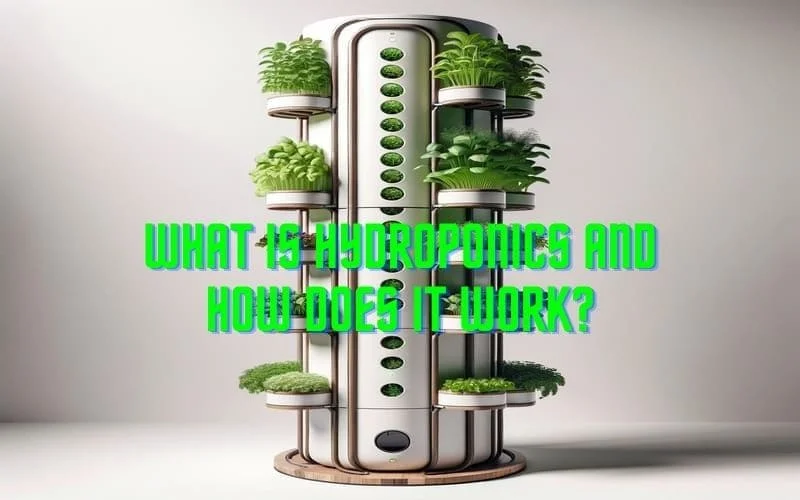
Article-at-a-Glance
- Hydroponics systems grow plants without soil, instead using nutrient-enriched water solutions that provide faster growth rates and up to 90% water conservation compared to traditional farming.
- The six primary hydroponic methods include Deep Water Culture, Nutrient Film Technique, Ebb and Flow, Drip, Wicking, and Aeroponics—each offering specific advantages for different plants and growing situations.
- Plants don’t actually need soil to grow; they require only water, nutrients, oxygen, and physical support, all of which hydroponic systems can provide more efficiently.
- Alternative Growing provides comprehensive hydroponic solutions for beginners and experts alike, helping sustainable agriculture enthusiasts maximize yields while minimizing environmental impact.
- Modern hydroponic systems can be built for under $50, operated year-round regardless of outdoor conditions, and tailored to grow everything from leafy greens to fruiting plants like tomatoes and strawberries.
Soil-Free Revolution: How Hydroponics Is Changing How We Grow Plants
“Soilless Agriculture: An In-depth …” from www.agritecture.com and used with no modifications.
Imagine growing plants twice as fast using 90% less water, in a fraction of the space, with virtually no weeds or pests to battle. That’s the hydroponics revolution in a nutshell. Hydroponics systems eliminate soil from the growing equation, replacing it with nutrient-rich water solutions that deliver exactly what plants need, when they need it. This soil-free approach is transforming agriculture from urban apartments to commercial greenhouses.
At its core, hydroponics works by providing plants direct access to all essential elements in their most accessible form. Plants grown hydroponically don’t waste energy developing extensive root systems to hunt for nutrients, so they redirect that energy into faster growth and higher yields. Alternative Growing has pioneered solutions that make these sophisticated growing techniques accessible to home gardeners and commercial operators alike, helping cultivate sustainable practices across the spectrum.
The environmental benefits are equally impressive. Hydroponic systems typically use 90-95% less water than traditional soil-based agriculture because the water recirculates rather than draining away or evaporating. This closed-loop approach also prevents nutrient runoff that can pollute waterways—a significant advantage as water conservation becomes increasingly critical. Additionally, hydroponics allows food production in previously unusable spaces like rooftops, abandoned warehouses, and areas with poor soil quality.
The Science Behind Hydroponics: Plants Without Soil
“Hydroponic monstera adansonii | Indoor …” from www.patchplants.com and used with no modifications.
The science of hydroponics challenges our fundamental assumptions about how plants grow. Many people believe plants need soil to survive, but this isn’t biologically accurate. Soil primarily serves as a medium to deliver water, nutrients, and oxygen to roots while providing physical support—functions that can all be replicated more efficiently in hydroponic systems.
How Plants Actually Feed (And Why They Don’t Need Soil)
Plants absorb nutrients in their ionic form, dissolved in water. In traditional gardening, organic matter in soil breaks down into these ionic nutrients through bacterial action, moisture, and time. Hydroponics simply bypasses this intermediate step, delivering pre-dissolved nutrients directly to plant roots. This direct delivery system makes nutrients immediately available without the plant expending energy seeking them out through extensive root systems.
The roots in hydroponic systems develop differently than in soil. Without the need to search for resources, they grow more compact and efficient, focusing on absorption rather than expansion. What’s fascinating is that plants can actually absorb nutrients more efficiently through water than soil—leading to growth rates that can exceed traditional methods by 25-50% under optimal conditions.
This scientific principle explains why plants ranging from lettuce to tomatoes can thrive without a single grain of soil. In fact, many commercial operations have demonstrated that certain crops actually perform better in hydroponic systems, developing superior flavor profiles and nutritional density when their growing conditions are precisely controlled. For those interested in exploring further, consider the best growing medium for hydroponics to optimize your plant growth.
The Perfect Nutrient Solution Recipe
The heart of any hydroponic system is its nutrient solution—essentially plant food dissolved in water. Unlike garden fertilizers designed to supplement soil, hydroponic nutrients must provide the complete spectrum of macro and micronutrients plants need. The primary macronutrients include nitrogen (N), phosphorus (P), and potassium (K), plus secondary elements like calcium, magnesium, and sulfur.
“A well-balanced hydroponic nutrient solution contains over 17 essential elements in precise ratios. Maintaining the proper balance is critical—even small variations can impact plant health and productivity.”
Solution pH is equally important as the nutrients themselves. Most plants prefer a slightly acidic solution between 5.5-6.5 pH, which maximizes nutrient availability. Outside this range, certain nutrients become chemically locked and unavailable to plants regardless of their concentration in the solution. Regular testing and adjustment of both nutrient concentrations and pH levels are essential maintenance tasks for any hydroponic gardener.
Oxygen Delivery to Roots: The Hidden Key
Perhaps the most overlooked aspect of hydroponics is oxygen delivery to the root zone. In soil, tiny air pockets provide roots with necessary oxygen, but in water, these pockets don’t exist naturally. Without sufficient oxygen, roots suffocate and become susceptible to root rot and pathogens. Successful hydroponic systems solve this challenge through various aeration methods.
Aeration techniques range from air stones and diffusers that release tiny bubbles into the nutrient solution to more sophisticated approaches like falling water that captures oxygen at the surface. Some systems, like NFT (Nutrient Film Technique), expose portions of the root system to air while keeping other sections bathed in flowing nutrient solution. The most advanced systems, aeroponics, deliver nutrients through a fine mist, maximizing oxygen exposure for explosive growth rates.
This delicate oxygen-water balance explains why properly designed hydroponic systems produce such impressive results. When roots receive optimal oxygen alongside perfectly balanced nutrients, plants can reach their full genetic potential in ways rarely seen in conventional agriculture. For more information on achieving this balance, consider exploring why testing pH and EC levels is crucial in hydroponics.
6 Main Types of Hydroponic Systems You Can Build
“Small-scale hydroponics | UMN Extension” from extension.umn.edu and used with no modifications.
Hydroponics isn’t a one-size-fits-all growing method. There are six fundamental systems, each with distinct advantages for different plants, spaces, and experience levels. Understanding these differences helps you choose the right system for your specific growing goals—whether you’re a beginner looking for simplicity or an experienced gardener seeking maximum yields.
1. Deep Water Culture (DWC): The Simplest Starter System
Deep Water Culture represents hydroponics at its most basic and accessible. In DWC systems, plants are suspended in net pots with their roots dangling directly into an oxygenated nutrient solution. An air pump connected to air stones creates bubbles that deliver oxygen to the roots, preventing them from drowning. This elegant simplicity makes DWC perfect for beginners—with minimal moving parts, there’s less that can malfunction.
The beauty of DWC lies in its low maintenance requirements and affordability. Once set up, you’ll mainly monitor water levels, solution strength, and pH rather than dealing with complex components. DWC systems excel with leafy greens like lettuce and herbs but can also support larger plants when properly designed. The main limitation is that if power fails and aeration stops, plants can suffer damage relatively quickly as oxygen levels drop in the stagnant solution.
2. Nutrient Film Technique (NFT): Perfect for Leafy Greens
NFT systems feature a continuous flow of nutrient solution running through shallow channels where plants are positioned in small holes along the top. Only the tip of the root system touches the shallow “film” of nutrient solution flowing beneath, while the upper portions of roots remain exposed to air. This design creates an ideal oxygen-water balance that promotes explosive growth for many plants.
Commercial growers favor NFT for its scalability and efficiency with quick-growing crops like lettuce, spinach, and herbs. The constant flow eliminates the need for aeration equipment, while the minimal water depth reduces overall system weight. However, NFT requires reliable electricity for pumps, as roots can dry out quickly if flow stops. The shallow channels also make NFT less suitable for larger plants with extensive root systems that might block water flow or require more substantial support.
3. Ebb and Flow: The Versatile Option
Ebb and Flow (also called Flood and Drain) systems periodically flood growing beds with nutrient solution, then drain it back into a reservoir. This flooding cycle, typically occurring several times daily, mimics natural rainfall patterns while providing excellent oxygenation as air is drawn to roots during the draining phase. Plants sit in individual containers filled with growing media, allowing for easy rearrangement or removal. For optimal growth, it’s crucial to understand how hydroponics rely on nutrients to nourish plants effectively.
This versatility makes Ebb and Flow systems excellent for mixed gardens with various plant sizes and species. The periodic flooding works well for plants that prefer cycles of moisture and dryness, and the system’s design forgives occasional power outages better than constant-flow methods. The main drawback is complexity—with more moving parts including timers, pumps, and drainage systems that require proper setup and maintenance to function correctly.
4. Drip Systems: Precise Control for Any Plant
Drip systems deliver nutrient solution directly to the base of each plant through a network of tubes and emitters. The solution slowly drips onto growing media surrounding the roots, which can be adjusted for different plants’ needs. This precision makes drip systems incredibly versatile and highly efficient for water and nutrient usage.
Commercial growers often choose drip systems for larger plants like tomatoes, cucumbers, and peppers because they can fine-tune delivery rates for different growth stages. The slow, targeted delivery prevents nutrient shock and allows for precise feeding schedules. Drip systems can operate as “recovery” (recirculating unused solution) or “non-recovery” (allowing runoff), with each approach having specific advantages for different growing scenarios. The main challenge with drip systems is maintaining even distribution and preventing clogged emitters, which requires regular cleaning and occasional replacement of components. For optimal growth, it’s important to understand why testing pH and EC levels is crucial in hydroponics.
5. Wicking Systems: Passive Hydroponics for Beginners
Wicking systems represent the most passive approach to hydroponics, using capillary action to deliver nutrients—the same principle that pulls water up a paper towel. Wicks made from rope, felt, or other absorbent materials draw nutrient solution from a reservoir up into growing media where plants access it. This entirely passive design requires no electricity, pumps, or moving parts, making it exceptionally reliable and low-maintenance.
For beginners or those in areas with unreliable electricity, wicking systems offer an excellent entry point to hydroponics. They work well for smaller plants with modest water requirements, though they generally provide slower growth than active systems. The main limitation is their reduced ability to support larger plants that need substantial water uptake, as wicking action can only move solution so quickly. Additionally, salt buildup can occur in the growing medium over time, requiring occasional flushing or replacement.
6. Aeroponics: Advanced Misting for Maximum Growth
Aeroponics represents the high-tech frontier of hydroponic growing. Rather than submerging roots in water or using growing media, aeroponic systems suspend plants in air and mist their exposed roots with nutrient solution at regular intervals. This approach maximizes oxygen exposure while delivering nutrients in easily absorbed droplets, creating ideal conditions for rapid growth and nutrient uptake.
NASA has researched aeroponics extensively for space applications due to its exceptional efficiency—using up to 90% less water than even other hydroponic methods. Plants in aeroponic systems typically grow faster and develop more abundant, finer root hairs that improve nutrient absorption. The tradeoff is complexity and reliance on technology—misting systems require precise timers, quality pumps, and specialized nozzles that need regular maintenance. Power outages pose significant risks, as exposed roots can dry out within hours without misting, making backup systems essential for serious aeroponic gardeners.
Essential Components for Any Hydroponic Setup
“How to build a cheap hydroponic system …” from www.ugaoo.com and used with no modifications.
Despite the differences between hydroponic methods, certain fundamental components appear across nearly all systems. Understanding these core elements helps demystify hydroponics and provides a checklist for building or purchasing your own setup. Each component serves a specific purpose in creating the optimal environment for soilless growing.
Grow Media Options: From Coconut Coir to Clay Pebbles
Growing media in hydroponics serves primarily to anchor plants and provide support rather than nutrition. The ideal medium holds adequate moisture while allowing excellent drainage and oxygen flow to roots. Popular options include expanded clay pebbles (lightweight, reusable, but relatively expensive), rockwool (excellent water retention, though not environmentally friendly), coconut coir (sustainable, excellent moisture balance), perlite (ultralight, sterile, great aeration), and combinations like perlite-vermiculite blends that balance water retention with aeration.
Pumps, Timers, and Automation Tools
The mechanical heart of most hydroponic systems consists of pumps that move water and air. Water pumps circulate nutrient solution from reservoirs to plants, while air pumps connect to diffusers or air stones to oxygenate the solution. Quality matters significantly here—reliable pumps prevent system failures that could quickly damage crops.
Timers and automation tools transform manual hydroponics into sophisticated growing systems that require minimal daily intervention. Simple outlet timers can control lighting cycles and intermittent pumping for flood and drain systems, while more advanced controllers monitor and adjust pH, nutrient levels, temperature, and humidity automatically. For serious growers, these automation tools justify their cost through consistent conditions, reduced labor, and the ability to collect growing data that improves future crops.
Lighting Requirements for Indoor Systems
Unlike outdoor gardens that rely on sunlight, indoor hydroponic systems require artificial lighting that mimics the sun’s spectrum. Modern LED grow lights have revolutionized indoor growing with their energy efficiency, minimal heat output, and customizable light spectrums for different growing phases. For leafy greens, lights emphasizing the blue spectrum promote compact, bushy growth, while fruiting plants benefit from increased red spectrum during flowering and fruiting stages. Proper light positioning, duration, and intensity significantly impact growth rates and yields—often becoming the limiting factor in indoor systems once other variables are optimized.
Hydroponic Benefits That Beat Traditional Gardening
“The Hydroponic Garden: An Indoor Garden …” from diydanielle.com and used with no modifications.
The shift from soil to hydroponics isn’t just a novelty—it delivers measurable advantages that make it increasingly attractive for both hobbyists and commercial growers. These benefits address many of the limitations and frustrations encountered in conventional gardening, offering solutions to challenges that have plagued agriculture for centuries.
90% Less Water Usage Than Soil Growing
Perhaps the most striking advantage of hydroponics is its extraordinary water efficiency. Traditional soil gardening is notoriously wasteful, with much of the applied water draining beyond root zones or evaporating before plants can use it. Hydroponic systems, by contrast, recirculate water in closed loops, reducing consumption by up to 90% compared to conventional methods.
This water conservation occurs because hydroponics delivers moisture directly to roots with minimal evaporation or runoff. In recirculating systems, the only significant water loss comes from what plants actually transpire or what evaporates from reservoir surfaces. For perspective, producing one pound of lettuce hydroponically requires just 10 gallons of water versus nearly 30 gallons in soil-based farming—a game-changing efficiency as water resources become increasingly precious globally.
Faster Growth Rates and Higher Yields
Plants grown hydroponically consistently demonstrate accelerated development, often reaching maturity 30-50% faster than their soil-grown counterparts. This rapid growth stems from the perfect balance of nutrients, oxygen, and water delivery that eliminates the stress plants experience when these resources fluctuate in soil environments. When roots don’t need to search for nutrients or recover from dry periods, they direct that energy toward vegetative growth and fruit production instead. For those interested in learning more about the importance of nutrients, check out how hydroponics can grow without nutrients.
The yield differences can be remarkable. Hydroponic lettuce often produces 11 crop cycles annually versus 3-4 in field conditions. Tomatoes in optimized hydroponic greenhouses can yield up to 10 times more fruit per square foot than soil gardens. These productivity gains come not just from faster growth cycles but also from the ability to plant more densely when roots don’t need to compete for resources underground.
Year-Round Harvests Regardless of Season
Traditional gardening binds growers to seasonal cycles and local climate constraints. Hydroponics breaks these limitations by creating controlled environments where growing conditions remain optimal regardless of outdoor weather. This climate independence allows for continuous production through winter months and in regions where certain crops wouldn’t naturally thrive.
The consistency of hydroponic growing environments also translates to more predictable harvests with reliable timing—a crucial advantage for commercial operations and food security planning. Even home growers appreciate the ability to harvest fresh basil or lettuce throughout winter months when grocery store prices for these items typically soar. This year-round productivity represents one of hydroponics’ most compelling advantages in uncertain climate conditions.
Space Efficiency for Urban Gardens
The spatial efficiency of hydroponics transforms growing possibilities in limited areas. Without the need for extensive root systems to search for nutrients in soil, plants can be positioned much closer together. Vertical hydroponic systems multiply this advantage by stacking growing planes, achieving yields from a 10×10-foot footprint that might require an acre of traditional farmland. For those interested in starting their own hydroponic garden, consider these hydroponic herb garden tips to maximize your space and yield.
This space efficiency makes hydroponics ideal for urban environments where growing space comes at a premium. Rooftops, balconies, spare bedrooms, and even kitchen countertops can become productive growing spaces with the right hydroponic setup. The ability to grow significant amounts of food in small spaces has profound implications for urban food security and reducing the carbon footprint of food transportation in city environments.
What You Can Grow: Best Plants for Hydroponic Success
“Hydroponic Indoor Plants – Everything …” from planterhoma.com and used with no modifications.
While nearly any plant can grow hydroponically with the right setup, certain varieties naturally excel in these systems. Understanding which plants thrive in soilless environments helps beginners achieve early success while avoiding unnecessary frustration. Your choice of plants should align with your specific hydroponic system and growing goals.
Leafy Greens and Herbs: The Easy Winners
Leafy greens consistently rank as the easiest and most productive hydroponic crops, making them perfect for beginners. Lettuce varieties (particularly loose-leaf types), spinach, kale, arugula, and Swiss chard thrive in nearly all hydroponic systems with relatively simple nutrient needs and short growth cycles. Many growers can harvest lettuce just 30 days after transplanting seedlings—roughly half the time required in soil gardens.
Culinary herbs likewise perform exceptionally well in hydroponic setups. Basil, cilantro, mint, parsley, and dill grow vigorously in nutrient solution, often developing more intense flavors than their soil-grown counterparts due to precise control of growing conditions. These herbs also command premium prices at markets, making them economically attractive crops for small commercial operations. The compact nature of herb plants makes them particularly suitable for small indoor systems where space efficiency matters.
Fruiting Plants: Tomatoes, Peppers and Strawberries
Once you’ve mastered leafy crops, fruiting plants offer the next level of hydroponic satisfaction. Cherry tomatoes and smaller determinate varieties adapt well to hydroponic conditions, though they require more sophisticated nutrient management and stronger support structures than leafy greens. The controlled environment allows for perfect ripening conditions that produce exceptionally flavorful fruit with higher sugar content than many supermarket varieties.
Peppers—particularly compact varieties like Thai chilies and smaller bell peppers—thrive hydroponically when given sufficient light and appropriate nutrient adjustments during flowering stages. Strawberries have become a hydroponic favorite for their continuous fruiting habit and relatively compact growth pattern. Their shallow natural root systems adapt particularly well to NFT and ebb-and-flow systems, producing sweeter berries with perfect texture when environmental conditions are properly maintained.
Plants to Avoid in Hydroponic Systems
Not all plants justify the investment in hydroponic growing space. Root vegetables like carrots and potatoes generally perform poorly compared to soil-grown counterparts, requiring deep growing media that negates many hydroponic advantages. Their value per square foot rarely justifies the space they occupy in most systems. Similarly, corn requires substantial height clearances and heavy nutrient consumption while yielding relatively low value per plant.
Large vining plants like watermelons and pumpkins present significant management challenges in confined hydroponic spaces, with their aggressive growth habits quickly overwhelming most home systems. Plants with extensive root systems or those adapted to drought conditions often fail to thrive in the constant moisture of hydroponic environments. For beginners especially, focusing on plants naturally suited to hydroponics builds confidence and ensures productive use of growing resources.
Getting Started: Your First DIY Hydroponic Garden
“Hydroponic Tubs: A Build-It-Yourself …” from dengarden.com and used with no modifications.
Beginning your hydroponic journey doesn’t require massive investment or technical expertise. Simple DIY systems can deliver impressive results while teaching fundamental principles that apply to more advanced setups later. The key is starting with manageable projects that build confidence and knowledge through hands-on experience.
Budget-Friendly Systems Under $50
Your first hydroponic system needn’t break the bank. A simple deep water culture setup can be assembled for under $30 using a plastic storage container, net pots, air pump, and growing media. For slightly more investment, a basic wick system using recycled bottles can grow herbs on a windowsill with no electricity required. These entry-level systems may lack the sophistication of commercial options, but they teach the same fundamental principles while producing impressive harvests of greens and herbs. For more information on the different types of hydroponic systems, you can check out this guide to hydroponic systems.
Starter Plants That Guarantee Success
- Butter lettuce – Ready to harvest in just 30-35 days with minimal nutrient demands
- Basil – Vigorous growth and multiple harvests from the same plant
- Spinach – Tolerant of slight variations in nutrient levels and pH
- Mint – Nearly indestructible even for beginners, thrives in hydroponic conditions
- Kale – Nutrient-dense crop that grows quickly with simple care requirements
Starting with seedlings rather than seeds gives beginners a significant head start. Young plants already have established root systems that adapt quickly to hydroponic conditions. Local garden centers often carry seedlings of common hydroponic favorites, though you’ll need to gently wash away all soil before transferring them to your soilless system. This careful cleaning prevents introducing soil-borne pathogens or pests to your clean hydroponic environment.
When selecting varieties, compact or dwarf cultivars generally perform better in limited hydroponic spaces. Look for determinate tomatoes rather than indeterminate vines, bush cucumber varieties instead of sprawling types, and compact lettuce varieties that won’t outgrow smaller systems. These space-efficient varieties deliver comparable harvests without overwhelming your growing system.
Remember that hydroponic plants grow significantly faster than soil plants, so stagger your planting dates to avoid harvesting everything simultaneously. Starting new seedlings every 2-3 weeks creates a continuous harvest cycle that maximizes system productivity and provides steady yields rather than feast-or-famine harvests that overwhelm your kitchen.
Begin with a quality hydroponic nutrient solution specifically formulated for the crops you’re growing. While general-purpose formulations work adequately for mixed gardens, specialized blends for leafy greens or fruiting crops optimize results for specific plant types. These balanced formulations eliminate the guesswork of nutrient mixing for beginners while ensuring plants receive the precise elements needed for healthy growth.
Troubleshooting Common Beginner Problems
Even the most carefully planned hydroponic gardens occasionally encounter challenges. Knowing how to identify and address common issues prevents minor setbacks from becoming crop failures. The most frequent beginner problems include nutrient deficiencies (identified by yellowing leaves or stunted growth), pH imbalances (causing nutrients to become unavailable even when present), and insufficient oxygenation (leading to root rot or slow growth). Investing in basic testing equipment like pH meters and electrical conductivity (EC) testers provides early warning of potential issues before plants show stress symptoms.
Beyond Hydroponics: Other Soil-Free Growing Methods
While hydroponics represents the most widespread soil-free growing technique, several related methods leverage similar principles with unique advantages. These alternative approaches often combine hydroponic concepts with ecological elements that enhance sustainability or address specific growing challenges. Understanding these variations expands your soil-free growing options.
Each alternative system offers distinctive benefits while sharing hydroponics’ fundamental advantage of precisely controlled growing conditions. Some growers transition between these methods as their experience grows, while others combine elements from different approaches to create hybrid systems tailored to their specific needs and values. The boundaries between these techniques continue to blur as innovative growers experiment with new combinations of soil-free growing methods.
- Aquaponics: Combines fish farming with hydroponics in a symbiotic system
- Bioponics: Introduces beneficial microbes to hydroponic solutions for organic growing
- Fogponics: Uses ultrasonic foggers to create superfine nutrient mist for roots
- Kratky Method: A non-circulating hydroponic technique requiring no electricity
- Vertical Farming: Stacks multiple growing planes to maximize production per square foot
These variations demonstrate how soil-free growing continues to evolve beyond traditional hydroponics. Each approach offers specific advantages for different growing scenarios, from off-grid applications to commercial-scale food production. The innovative spirit driving these developments suggests we’ve only begun to explore the possibilities of controlled environment agriculture.
For beginners, understanding these alternatives prevents locking into a single approach too early. Many growers find their methods evolve as they gain experience, often incorporating elements from different soil-free techniques to address specific challenges or align with their sustainability goals. This flexibility represents one of the most exciting aspects of modern controlled-environment growing—the ability to customize systems precisely to your needs.
Aquaponics: Combining Fish and Plants
Aquaponics creates a miniature ecosystem where fish waste provides natural fertilizer for plants, which in turn filter the water returning to fish tanks. This symbiotic relationship eliminates the need for synthetic nutrients while producing both plant crops and protein sources in a single integrated system. Fish like tilapia, catfish, or ornamental koi convert their feed into ammonia-rich waste that beneficial bacteria transform into nitrates—the perfect nitrogen source for plants. While more complex than standard hydroponics, aquaponic systems achieve remarkable sustainability once balanced, often requiring water changes only to compensate for evaporation and plant uptake.
Bioponics: The Organic Approach to Hydroponics
Bioponics bridges the gap between conventional hydroponics and organic growing by introducing beneficial microbes to nutrient solutions. These living systems utilize microbial communities to help convert nutrients into forms more readily available to plants, mimicking the soil food web in a soilless environment. Biologically active solutions typically rely on compost teas, worm castings, and other natural amendments rather than isolated synthetic nutrients, appealing to growers seeking organic certification or more ecological approaches.
The microbial communities in bioponic systems offer additional benefits beyond nutrition, including natural suppression of pathogens and production of plant growth promoters. These systems require different management than conventional hydroponics, with greater emphasis on maintaining beneficial microbial populations and monitoring solution biology rather than adhering to precise chemical formulations. For growers concerned about the ecological footprint of their indoor gardens, bioponics provides a middle path between conventional hydroponics and traditional organic methods.
Growing Forward: Why Hydroponics Matters for Our Future
Hydroponics represents more than just an interesting gardening technique—it offers practical solutions to some of humanity’s most pressing challenges. As climate change disrupts traditional growing seasons and extreme weather events threaten conventional agriculture, controlled-environment growing provides resilience and stability. Water scarcity, already affecting agricultural regions worldwide, makes hydroponics’ 90% water reduction increasingly valuable. Meanwhile, population growth and urbanization create ever-greater demands for food production on limited arable land.
The future likely involves diverse growing methods rather than any single approach dominating. Hydroponics won’t replace all conventional agriculture, but it offers critical advantages for specific crops and growing environments. Its greatest promise may lie in bringing fresh food production closer to urban centers, reducing transportation emissions while providing fresher, more nutritious produce to city dwellers. As technology continues advancing and systems become more accessible, hydroponics will likely play an increasingly important role in our food security landscape—making understanding these systems relevant for anyone interested in sustainable living and the future of food.
Frequently Asked Questions
New hydroponic growers often share common questions as they navigate the transition from conventional gardening to soil-free methods. These practical concerns reflect the learning curve associated with any new growing technique. Addressing these questions helps smooth the path for newcomers while providing useful refreshers for experienced growers facing specific challenges.
Is hydroponic produce as nutritious as soil-grown produce?
Research consistently shows that properly grown hydroponic produce equals or exceeds the nutritional content of soil-grown equivalents. A comprehensive study by the University of Copenhagen found that hydroponic lettuce contained significantly higher levels of vitamins A, C, E, K, and B6 than field-grown samples. The key factor is precise nutrient delivery—hydroponics allows growers to provide the exact mineral balance plants need for optimal nutrition, whereas soil conditions vary widely and often lack key micronutrients.
The taste difference often noted in hydroponic produce typically reflects freshness rather than growing method. Harvesting at peak ripeness and consuming immediately delivers flavor compounds at their most vibrant—an advantage home hydroponic growers enjoy that’s difficult to match with store-bought produce shipped over long distances. When properly managed, hydroponic systems can produce exceptionally flavorful and nutritious crops that reflect thoughtful cultivation rather than any inherent limitation of soil-free growing.
How much time does hydroponic gardening take each week?
Time requirements vary significantly depending on system complexity and automation level. A basic manual system typically requires 15-30 minutes daily for monitoring nutrients, checking pH, and inspecting plants. More automated setups with dosing pumps and monitoring equipment might need only 1-2 hours of attention weekly, primarily for harvesting and occasional system maintenance. The learning curve initially demands more time as you master the principles and processes, but efficiency improves dramatically with experience.
Many growers find that hydroponics actually saves time compared to traditional gardening once systems are established. The absence of weeding, reduced pest management, and elimination of soil preparation significantly reduce labor requirements. The predictable growing environment also creates more consistent schedules than outdoor gardening, where weather events can suddenly demand emergency interventions. For time-conscious growers, investing in automation tools like timers, dosing pumps, and monitoring systems pays dividends through reduced daily maintenance requirements.
Can I convert my existing plants to a hydroponic system?
Most established plants can successfully transition from soil to hydroponics, though the process requires care to prevent transplant shock. Begin by gently washing all soil from roots under lukewarm running water, being particularly careful with delicate root structures. Once cleaned, place plants in your hydroponic media and run a half-strength nutrient solution for the first week as they adjust. Expect some temporary wilting during transition, but most healthy plants recover within 7-10 days and often demonstrate accelerated growth thereafter as they adapt to direct nutrient access.
What’s the biggest mistake beginners make with hydroponics?
The most common beginner mistake is overcomplicating their first system. Starting with elaborate setups before mastering basics often leads to frustration and unnecessary expense. Begin with simple systems like DWC or wick methods to learn fundamental principles before advancing to more complex approaches. This progression builds confidence while developing the observation skills needed for successful hydroponics.
Another frequent error is neglecting proper environmental controls, particularly for indoor systems. Even perfect nutrient delivery can’t overcome inappropriate temperatures, humidity levels, or insufficient lighting. Successful hydroponic growing requires holistic attention to all environmental factors, not just water and nutrients. Beginning with naturally adaptable crops in moderate environments allows new growers to focus on mastering nutrient management before tackling more demanding plants or challenging growing conditions.
Are hydroponic systems noisy or messy to maintain indoors?
Modern hydroponic systems designed for home use operate with minimal noise and mess when properly set up. Air pumps—typically the noisiest component—are now available in ultra-quiet models producing under 30 decibels (quieter than a whispered conversation). Water pumps submerged in reservoirs create little sound beyond a gentle trickling that many find pleasant. Placing equipment on foam pads further reduces vibration noise that might otherwise transfer to floors or countertops.
Regarding cleanliness, well-designed systems contain water completely within reservoirs and growing chambers, with no splashing or leakage during normal operation. Occasional reservoir changes and system cleaning remain the primary maintenance tasks that might create temporary mess, but these typically occur just once every 2-4 weeks for most home systems. Using proper technique when mixing nutrients and handling plants prevents spills that could stain surfaces or leave mineral deposits. With reasonable precautions, indoor hydroponic gardens integrate seamlessly into living spaces with minimal impact on home cleanliness or ambient noise levels.
With proper planning and reasonable expectations, hydroponic gardening offers remarkable rewards for minimal investment of time and resources. The satisfaction of harvesting fresh, flavorful produce you’ve grown yourself—regardless of outdoor weather or seasons—makes the learning curve worthwhile for thousands of enthusiastic growers worldwide. Whether you’re motivated by environmental concerns, space limitations, or simply the joy of growing, hydroponics opens new possibilities beyond traditional gardening constraints.
